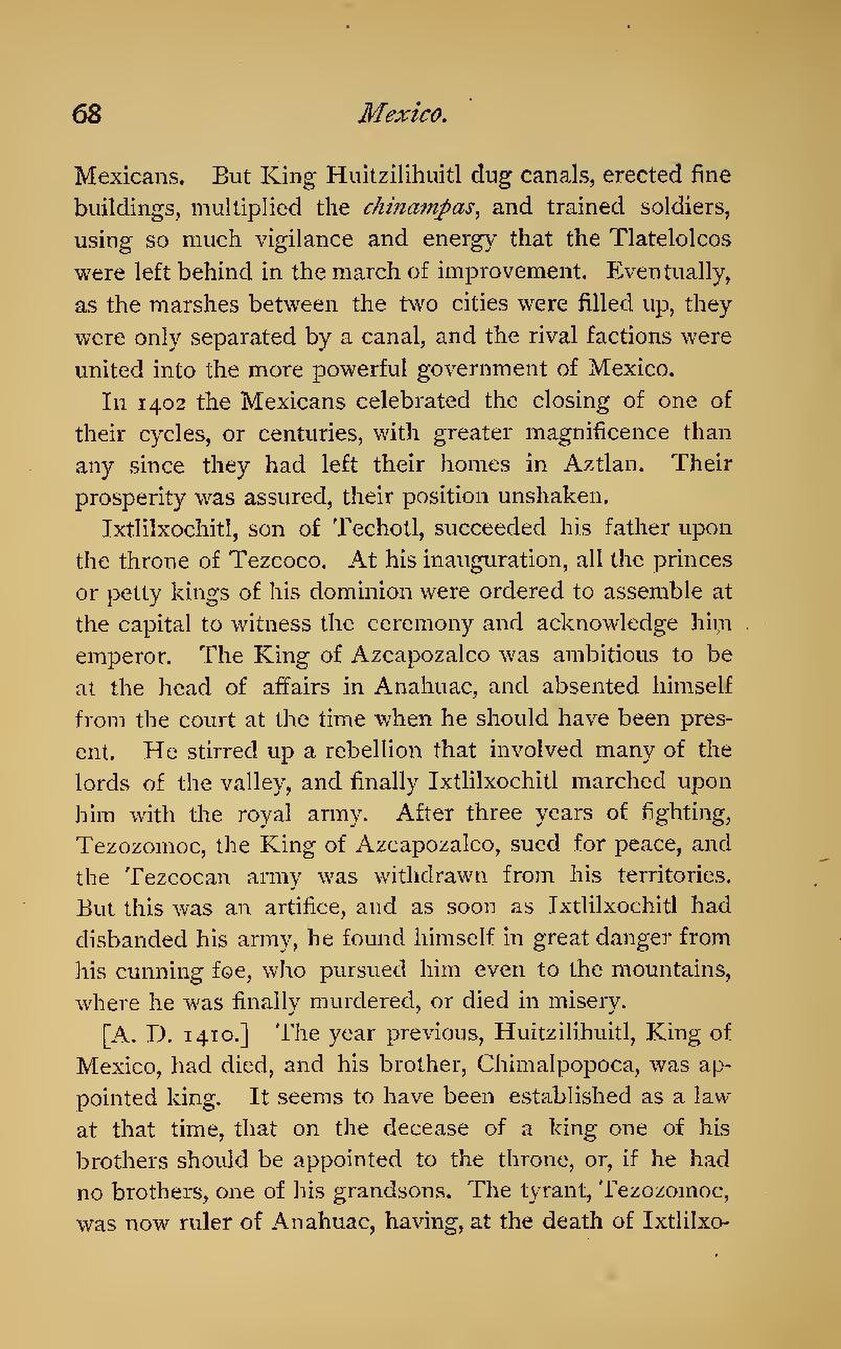Mexicans. But King Huitzilihuitl dug canals, erected fine buildings, multiplied the chinampas, and trained soldiers, using so much vigilance and energy that the Tlatelolcos were left behind in the march of improvement. Eventually, as the marshes between the two cities were filled up, they were only separated by a canal, and the rival factions were united into the more powerful government of Mexico.
In 1402 the Mexicans celebrated the closing of one of their cycles, or centuries, with greater magnificence than any since they had left their homes in Aztlan. Their prosperity was assured, their position unshaken.
Ixtlilxochitl, son of Techotl, succeeded his father upon the throne of Tezcoco. At his inauguration, all the princes or petty kings of his dominion were ordered to assemble at the capital to witness the ceremony and acknowledge him emperor. The King of Azcapozalco was ambitious to be at the head of affairs in Anahuac, and absented himself from the court at the time when he should have been present. He stirred up a rebellion that involved many of the lords of the valley, and finally Ixtlilxochitl marched upon him with the royal army. After three years of fighting, Tezozomoc, the King of Azcapozalco, sued for peace, and the Tezcocan army was withdrawn from his territories. But this was an artifice, and as soon as Ixtlilxochitl had disbanded his army, he found himself in great danger from his cunning foe, who pursued him even to the mountains, where he was finally murdered, or died in misery.
[A. D. 1410.] The year previous, Huitzilihuitl, King of Mexico, had died, and his brother, Chimalpopoca, was appointed king. It seems to have been established as a law at that time, that on the decease of a king one of his brothers should be appointed to the throne, or, if he had no brothers, one of his grandsons. The tyrant, Tezozomoc, was now ruler of Anahuac, having, at the death of Ixtlilxo-
